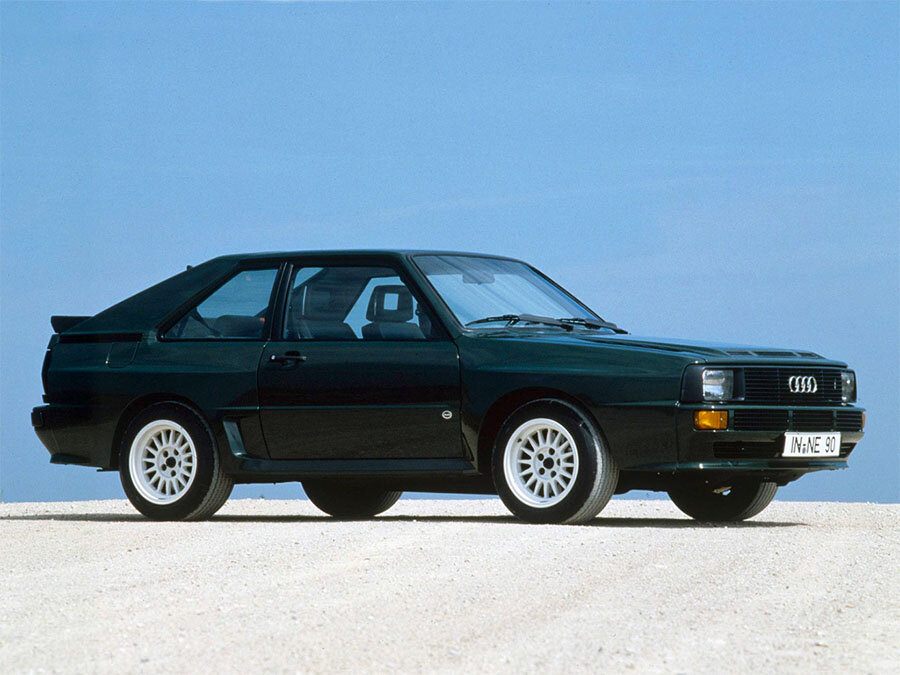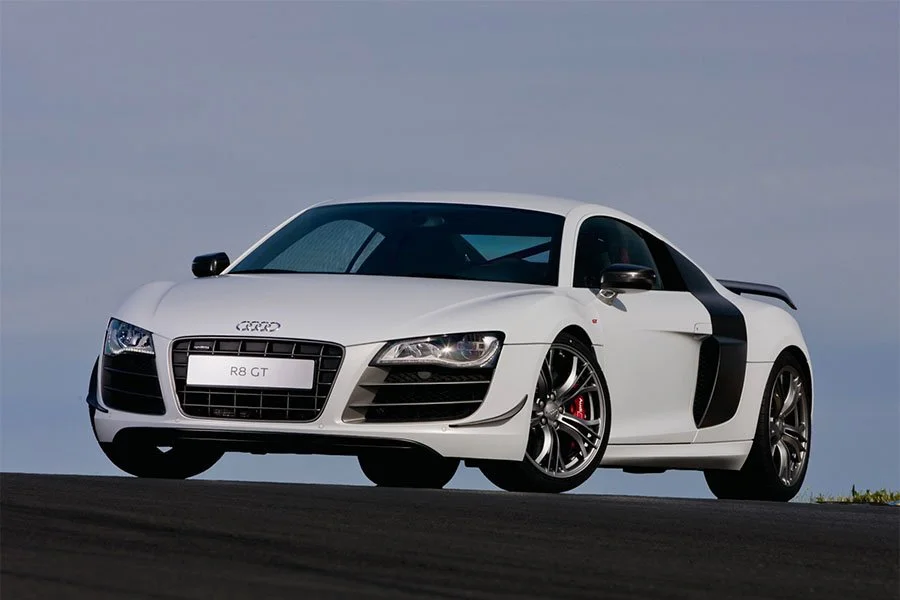Guide: Audi Quattro Sport - a Historical & Technical Appraisal
/BACKGROUND
In 1982, Audi won both the World Rally Championship for Manufacturers and Drivers. In 1983, Audi driver Hannu Mikkola retained the Driver’s title but the Manufacturer’s award went to Lancia.
Against conventional wisdom, Lancia achieved this feat with a rear-wheel drive model: the 037 Rally.
However, the effectiveness of Audi’s pioneering four-wheel drive system was not in doubt. Rather, Lancia had merely been the first auto maker to take advantage of new regulations that would revolutionise rallying for a few short seasons.
The Group 4 category, which had broadly followed the same format since 1970, was dropped as motor sport adopted an entirely new regularity framework. Groups 1 to 6 were superseded as the FIA moved to a simpler format: Groups A, B and C.
Homologation into Group A required 5000 units. Qualifying cars were eligible for rallying and touring car racing.
Group B had a 200 vehicle requirement which represented a 50% reduction on the outgoing Group 4 class. Group B cars would form the premier rally division and could also contest the World Sportscar Championship where they would race alongside out-and-out Group C prototypes.
Group C had no minimum production figure but did employ a fuel efficiency limit of 600-litres per 1000 kilometres.
Like nearly all subsequent Group B vehicles, the Lancia 037 was designed purely for competition success.
By contrast, the Audi Quattro was a proper production model and, as such, struggled to compete despite its four-wheel drive advantage.
The writing was on the wall and, if Audi wanted to stay competitive, they too would have to create a Group B homologation special.
Rather than start with a clean sheet, Audi management wanted a Quattro-based car. They reasoned that a switch to an all-new machine in such a short space of time would reflect badly on the production model.
The result was the Quattro Sport; a lighter, short wheelbase variant with considerably more power.
Unveiled at the Frankfurt Motor Show in September 1983, production of the Quattro Sport started in February 1984 and homologation was approved on May 1st. A competition version made its debut on the Tour de Corse two days later.
Costing roughly four times as much as a regular Quattro, each Quattro Sport was assembled at the Baur coachworks in Stuttgart as opposed to the usual Ingolstadt facility.
CHASSIS
These homologation specials were based around a shortened version of the same B2 pressed steel monocoque used by the regular Quattro.
At 2204mm, the wheelbase had been reduced by a massive 320mm in an attempt to improve handling and save weight.
Unfortunately, it actually led to an even greater weight bias over the front axle; 62/38 as opposed to 60/40. This meant a more aggressive driving style was required to address the car’s chronic understeer.
Suspension was fully independent. At each corner was a MacPherson strut, lower wishbone and a height-adjustable coil spring over a gas-filled telescopic damper. Anti-roll bars were fitted to either end.
To improve stopping power, bigger 295mm ventilated brake discs were installed. This compared with front discs of 280mm and rears of 245mm on the standard model.
Beefier four-piston calipers were another Sport Quattro upgrade.
Power steering and anti-lock brakes were retained although the ABS could be disengaged from the cockpit.
To improve roadholding, the 15-inch Ronal wheels went from 8 to 9-inches wide.
A 90-litre fuel tank installed above the rear axle was the same for all Quattros.
ENGINE / TRANSMISSION
Unlike the series production variant which had an iron block engine, the Quattro Sport was equipped with a lightweight aluminium-alloy block more or less the same as the type used by the A1 rally car.
The new KW engine was also Audi’s first to feature four valves per cylinder.
A dual overhead camshaft inline ‘five’, the KW unit displaced a whisker under 2133cc as opposed to the original 2144cc. This was achieved by way of a 0.2mm bore reduction (now 79.3mm). Stroke was left unchanged at 86.4mm.
The drop in overall capacity was necessary as Group B regulations enforced a three-litre limit with a 1.4 multiplier for turbocharged engines.
Audi installed a KKK K27 turbo set at 1.2 bar along with an air-to-air intercooler.
Compression was 8.0:1 and fuel-injection came courtesy of the Bosch LH Jetronic system.
Output figures rose dramatically. Power was up from 200bhp at 5500rpm to 306bhp at 6700rpm. The torque rating improved from 210lb-ft at 3500rpm to 258lb-ft at 3700rpm.
A five-speed gearbox was employed but a six-speed unit was soon available for competition use. The permanent four-wheel drive system featured self-locking differentials and a 50/50 torque split.
BODYWORK
Visually, the new car was clearly Quattro-derived albeit significantly modified.
The front end was redesigned and reduced in size to improve aerodynamics. Smaller headlights were mounted either side of a full-width grille.
A heavily vented front bumper and lower valance were also fitted. The former did away with any fog lights.
As the bonnet now sloped downwards, a pronounced bulge was necessary to accommodate the engine. A trio of ducts were added at the bonnet’s leading edge along with a bank of diagonal vents up the right-hand side.
Four dramatically flared wheelarches were connected by deep body coloured skirts.
To reduce internal reflections from the dashboard (a common driver complaint), a more steeply raked windscreen from the Audi 80 was fitted.
Tail lights were given a dark smoke effect finish, a look that was adopted by the standard Quattro from August 1984.
With the exception of steel doors (imported from the Audi 80), body panels were a mix of carbon-Kevlar and fibreglass.
INTERIOR
As expected given the shortened wheelbase, rear cockpit space was drastically reduced.
Up front, a more ergonomic hard foam dash was fitted. The redesigned instrument binnacle housed a large 300kmh speedometer and 8000rpm tach plus smaller readout outs for battery condition, turbo boost and fuel level.
Three additional instruments for oil pressure, oil temperature and water temperature were added at the top of the central control panel.
New figure-hugging Recaro front seats came with leather bolsters and suede centres. The rear seats were 100% leather.
OPTIONS
Optional extras included electric windows, plug-in harness belts and a right-hand side door mirror. The passenger-side mirror was originally removed as it reduced the top speed by 2kmh.
WEIGHT / PERFORMANCE
Despite the Quattro Sport’s shortened wheelbase, alloy engine block and extensive use of composite body panels, the overall weight saving was not as great as might have been expected.
The new car tipped the scales at 1273kg, just 27kg less than the standard model.
However, performance was dramatically improved. Top speed rose from 137mph to 155mph while the 0-62mph time dropped from 7.1 to 4.8 seconds.
PRODUCTION
Production ran from February 1984 until January 1986 and the Quattro Sport was only offered in left-hand drive.
214 examples were originally manufactured and Audi officially offered a choice of just four colours: Tornado Red (128 built), Alpine White (48 built), Copenhagen Blue (21 built) and Malachite Green (15 built).
In addition, two special order examples were painted black, one of which was destined for Volkswagen Audi Group Chairman, Ferdinand Piech.
164 cars were sold to customers while the rest were retained by Audi for corporate and competition use. In 1986, ten unsold cars were taken to the USA and Federalised to promote Audi’s attack on that year’s Pikes Peak Hillclimb (which Bobby Unser won in an S1 Quattro).
Another five Quattro Sports were subsequently assembled from leftover parts in 1988.
Text copyright: Supercar Nostalgia
Photo copyright: Audi - https://www.Audi.com


































